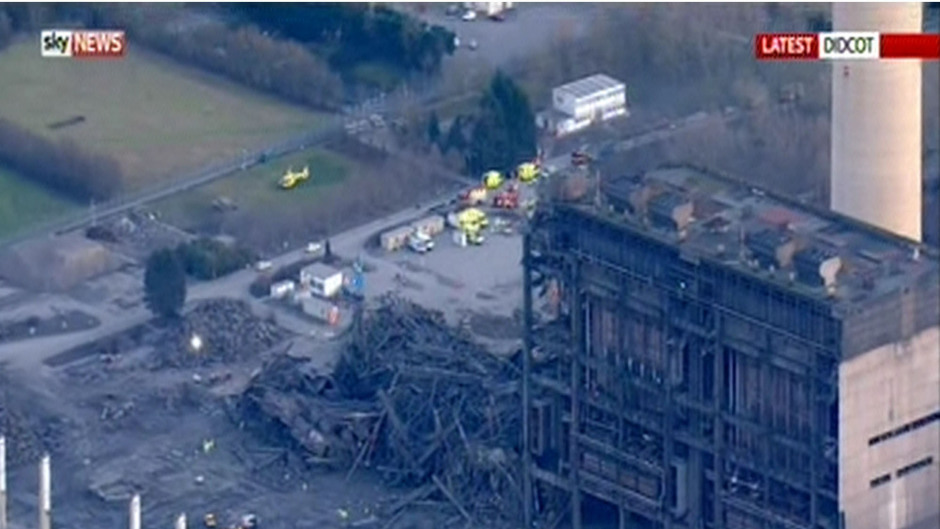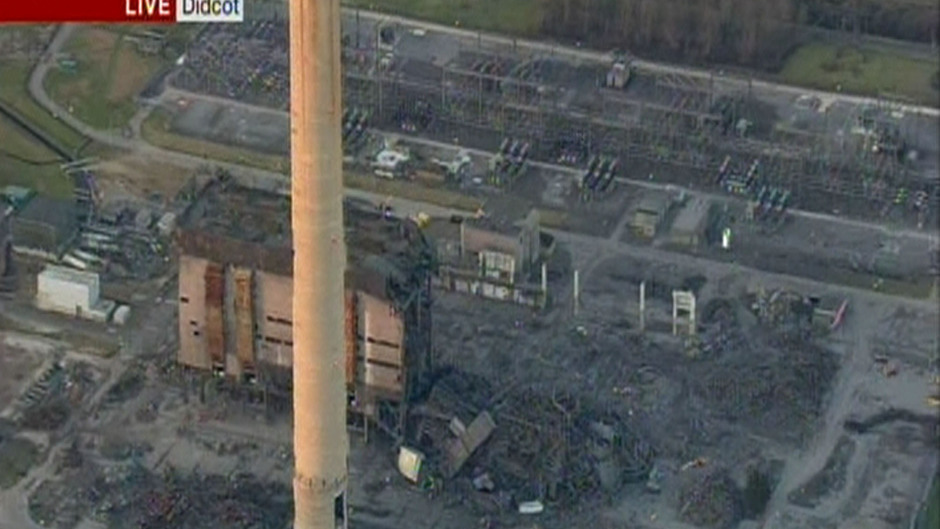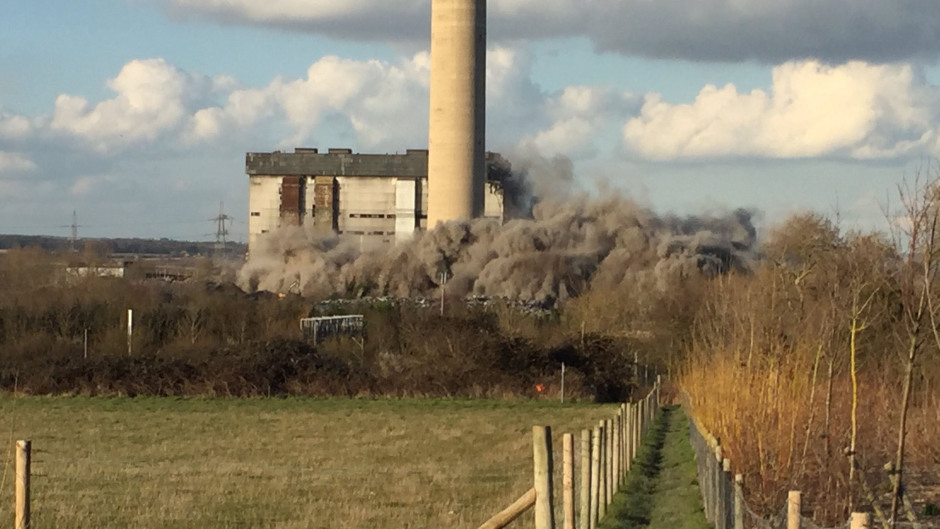One person is dead, three are missing and five are in hospital following a building collapse at Didcot Power Station.
Emergency services declared a “major incident” after being called to the scene in south Oxfordshire at 4pm.
The collapse happened at the former coal-fired Didcot A plant, which closed in 2013 and was in the process of being demolished.
Area manager Mat Carlile, from Thames Valley Fire Control Service, said: “I can confirm search operations are in progress and that there has been one fatality, five persons have been taken to hospital and three persons are currently missing.”
The fire service advised people to stay indoors, saying that while dust from the collapse had covered “a considerable area” there were no hazardous materials in the building.
Fire engines from Oxfordshire were at the scene, along with specialist search units and further teams from Thames Valley Police and South Central Ambulance Service, including six ambulances and two air ambulance helicopters.
Pictures from the scene showed a significant chunk of a building in the defunct Didcot A site has collapsed, with a large amount of debris on the ground.
A GMB union official told the Press Association: “We understand that workers were preparing two boilers for demolition in the coming weeks. This led to the collapse of a building.”
Oxford University Hospitals NHS Foundation Trust said “casualties” were being taken to the John Radcliffe Hospital in Oxford and asked the public to stay away unless suffering “serious or life-threatening emergencies”.
David Cooke, whose company Thames Cryogenics has a building overlooking the power station, said: “Our building shook and as we looked out of the window, the end of the main turbine hall collapsed in a huge pile of dust.
“It totally obscured the towers and must have drifted across the roads and main rail line. What’s left looks a tangled mess.
“The dust was hanging over the area for five to 10 minutes.
“First thought was it didn’t looked planned, followed by the thought that people are going to have been hurt.”
Didcot A opened in 1970 as a coal-fired power station and was later converted so it could also generate power from natural gas.
It ceased generation in March 2013 and hundreds gathered to watch when three of its enormous cooling towers were blown up in July 2014 after dominating the town’s skyline for more than four decades.
According to the RWE npower website the total demolition of the site is expected to be complete by the end of this year.
A spokeswoman for npower said: “The site is currently being demolished. We are working with our contractors Coleman and Company to establish the facts and will keep you updated as soon as we have more information.”
The incident comes 16 months after a major fire struck a cooling tower at Didcot B in October 2014.
The blaze affected 50% of the station output – supplying a million homes.


